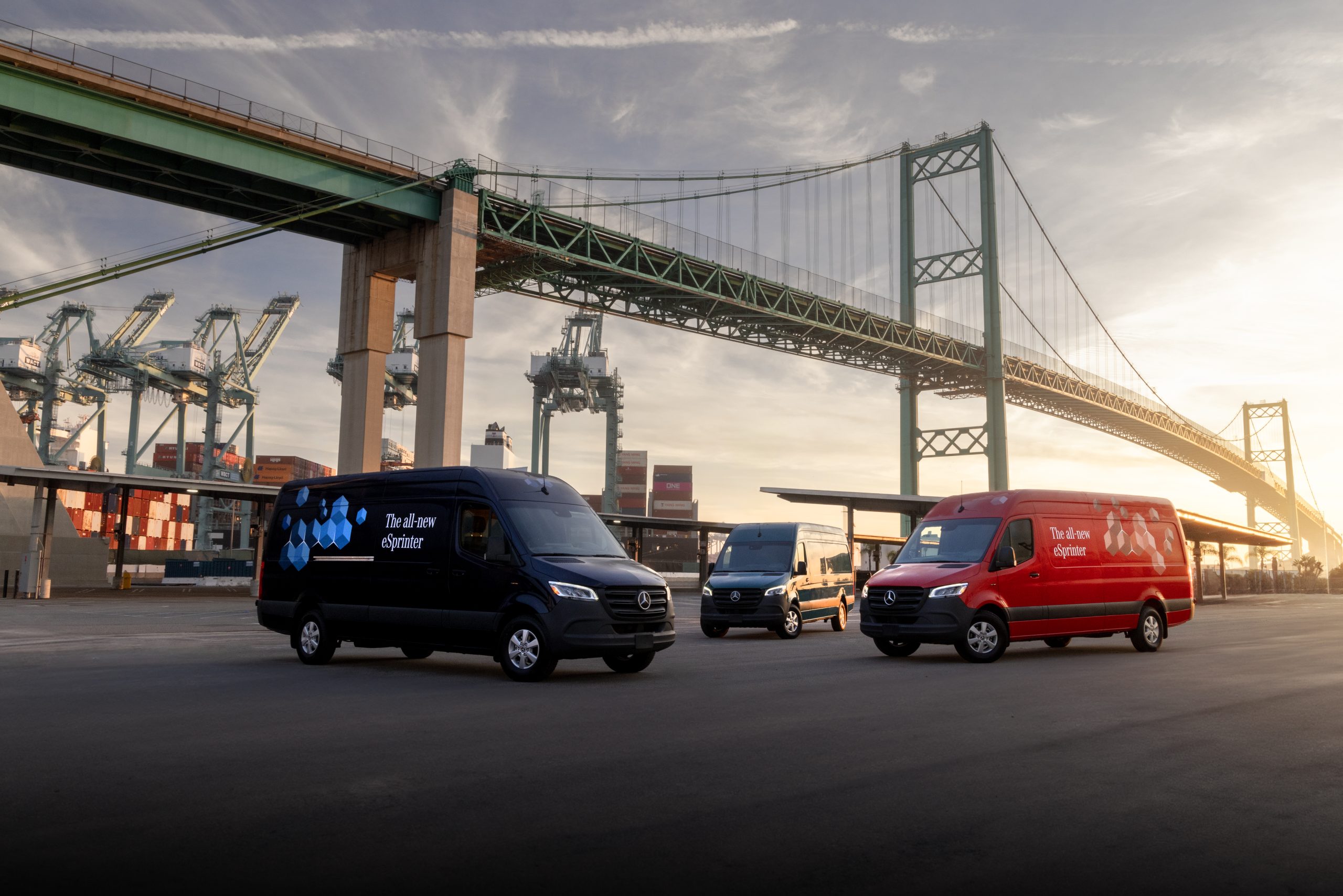[ad_1]
From Los Angeles to Huntington Beach, CA on a mix of city streets and highways

The new eSprinter is a major step toward Mercedes-Benz’s commitment to a fully electric future of mobility, and is certain to be an increasingly important segment of their van market. Though we are more frequently behind the wheel of the brand’s passenger vehicles, given the importance of this product in the commercial and fleet space (and very likely consumer space too) we wanted to experience it first-hand and had the opportunity to drive it from Los Angeles to Huntington Beach, CA on a mix of city streets and highways.

While quite large (it’s 170″ long with a high roof and can hold 488 cu ft of cargo up to 2,634 lbs and tow up to 4,200 lbs.), it’s actually very easy to drive, and more comfortable than other products in the segment that we’ve experienced. Other than its electric powertrain, the eSprinter is nearly identical to its non-electric twin, and the latest MBUX infotainment system is an available option. Not surprisingly, it drives like a van, specifically one made with cities in mind. As with all electric vehicles, torque is immediately available, so you can easily accelerate to merge into traffic or as needed. It’s not an AMG, and is obviously not made for athletic performance. It’s limited to 70 mph, adequate for nearly every use. Because of the electric motor the interior is noticeably quieter.

“The new Mercedes-Benz eSprinter underlines our claim to ‘Lead in Electric’ and kicks off the next stage of our electrification strategy. Its versatility and flexibility make the new eSprinter the ideal vehicle for a wide range of applications,” says Mathias Geisen, Head of Mercedes-Benz Vans. The gasoline-powered range includes several models, and it’s likely that we’ll see more eSprinter models added to the portfolio over the next few years. While currently more expensive than its gasoline powered twin, starting at $74,181 (which includes destination fees) the savings over using diesel fuel add up quickly, and of course there’s the marketing desire / opportunity to use and share that the company uses electric vehicles. It may also provide more access to certain city areas or lanes dedicated for EV use.



This is a workhorse, designed for small businesses, delivery and service fleets, and mobile workshops. Most customers will take delivery in a standard “panel” configuration, but other options are available. The conversion market has been anxiously awaiting its arrival with plentiful options for sport, camping and mobile offices coming soon. The eSprinter is new to the US and China, and will be made in the company’s North Charlston, SC plant in the US, and their Düsseldorf and Ludwigsfelde plants in Germany.

The eSprinter sits on a new platform, called VAN.EA (Van Electric Architecture), that will support all upcoming electric models. Its battery pack sits under the van’s floor between its axles, and its 286 lb permanent magnet synchronous electric motor, delivering 295 lb feet of torque (available in either 100 or 150 kw variants), sits alongside the electric rear axle. The batteries are LFP (lithium ferro-phosphate) and nickel- and cobalt-free. Drivers can select three driving modes—comfort, eco and extended range, and one of five energy recuperation modes. Estimated range is 273 miles, which varies based on driving style, weather, etc. AC and DC charging is supported, and the ports are accessed behind the Mercedes-Benz star in the grille. Specified maintenance is included for the first four service visits over four years, or up to 100,000 miles.
CONTEXT: incontent
This placeholder is removed when the ad slot is configured.
[ad_2]
Source link https://coolhunting.com/technology/test-drive-2024-mercedes-benz-esprinter/

Leave a Reply
You must be logged in to post a comment.